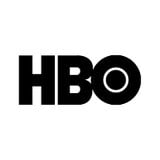Japanese subtitling
- 1. define your requirements
- 2. request a quote
Subtitling in Japan
Let's face it- it's challenging enough to come across a reliable subtitling service provider online. But try finding one that can truly convey the authentic experience with your content in Japanese!
There is a commonly adopted subtitle development process that all subtitling companies follow. For a start, customer content is reviewed, and professional audiovisual translators are assigned. Then English Master Templates are created, translated into Japanese, and proofread by captionists. Finally, the Japanese subtitles or captions are QCed and delivered in the requested subtitle format. And following this workflow should be enough to transcend the authentic content feel in Japanese.
But there's a catch.
The original content has been produced in another country, within a different cultural context and simply translating and subtitling it in Japanese language is not enough to convey its creative intent. In result, the translated version fails to engage the local viewers and very successful TV shows, films, commercials, video games or other media end up as mediocre for the local audience.
To help you transcend the original experience with your content and achieve a native feel, we apply a culture first approach- we craft and deliver Japanese subtitles that consider all local norms and traditions to create a culturally relevant and immersive viewer experience for Japan.
GoPhrazy provides Japanese subtitling services through our native subtitle translators for the needs of your TV, films, cartoons, animations, e-learning videos, commercials, and video games. Here's the deal- it takes just 3 easy steps with us to make your subtitles perfect for Japan:
subtitling in just 3 easy steps: describe your specifications request a quote get your ready-to-use files
Since 1994 we have localized over 10 000 hours of TV programming in foreign languages for providers like Discovery Channel, TLC, HBO, FOX, Cartoon Network, Nickelodeon, Disney Channel and many more. The list gets bigger when we add localizing of over 1000 film titles for theatrical and TV distribution, as well as blockbuster games like League of legends, GTA and Civilization.
But that's not all.
We are also a preferred multilingual subtitling company to leading advertising agencies like Ogilvy, Leo Burnett and Saatchi & Saatchi, localizing countless TV commercials for Fortune 500 companies like Coca Cola, Nestle, Procter & Gamble, Samsung, Gillette, Sony, BMW, Danone and more.
Where dialogue becomes vision
What makes over 300 companies come back and reward us with more than 10 000 projects over the years is our culturally intelligent approach. It’s a group of methods that blend meaning and feeling with local expertise to provide a peace of mind that your media feels great in Japanese.
It all starts with you
We know that the most important factor in communication is to make sure that your viewers can connect and engage with your content not only on a linguistic but most importantly on a cultural level. That's why we don’t simply translate and subtitle your script in Japanese language. Instead, we assist you in adapting your content to the local culture and craft a superior viewer experience.

Japanese subtitling company
GoPhrazy is the number one choice for Japanese subtitles and captions due to our obsession with Client needs and our determination to deliver all projects always on time, in full and error free. We are an award winning subtitling company, trusted by major broadcasters and platforms.
Expertly written and perfectly timed
Our subtitlers are not only true experts in Japanese language but also in weighing written against spoken words, editing text to fit both visually and contextually, retaining the essence without any loss of meaning. While translating and developing Japanese subtitles, we consider the rhythm of the video, dialogue pace and the viewers' reading speed. We create subtitles and captions with timings synchronized with a surgical precision to the highest level of accuracy (up to 1/100 sec). As a result, our Japanese subtitles are always consistent but above all, always a pleasure to read.
Our Japanese subtitling specialists
Creating Japanese subtitles requires much more than simply making a word-by-word translation of a video script. Our subtitlers need to understand and experience the content; retain the context and meaning of the original version and convey it into Japanese, considering cultural differences. That's why we work with a large pool of local subtitle translators that have expertise in many sectors, including entertainment, advertising, video game, e-learning, technology, and more.
Our in-house subtitling department
Though we employ highly trained, experienced and subject-matter competent, native freelance Japanese subtitle translators, we also have a team of in-house subtitling QCers who validate each and every file against the assigned specifications and cultural checklists to ensure that your Japanese subtitling service is always delivered correctly. In result, your locally versioned media is ready to publish, in the style and format that you require. We strive to provide a seamless viewer experience in Japanese and we know that the perfect subtitling is the one that you never notice.
Subtitling technology
While our culturally intelligent approach ensures the cultural fit of your content in Japanese, it's our best-in-class technology that enables us to deliver superior quality while remaining cost effective. It empowers a collaborative environment and content flows that simplify the process and help you reach your local audience faster, cheaper and better than ever before.

Japanese subtitling services
At GoPhrazy we develop, translate and provide Japanese subtitles that are relevant from both culturally linguistic and technical standpoint in order to create a truly immersive and memorable experience with your content for Japan. Our subtitling and captioning services are mostly used by TV channels, OTT, IPTV and VOD platforms; film, advertising, education, video game and IT companies for making their media accessible to the local audience and are well known for their focus on precision and style. In the recent years we are also facing an increasing demand for Japanese subtitling services by social/ video sharing platforms like YouTube, Vimeo, and iTunes.
Our subtitling services
- Japanese subtitling from template
- Japanese subtitling without template
- Japanese subtitling on provided script
- Japanese subtitling with no script available
Japanese closed captioning
Improve the accessibility of your content in Japan by taking advantage of our Japanese closed captioning services! While subtitles are created for hearing viewers and only reflect dialogue, our Japanese closed captioning includes all audio elements to provide more context and enhance the content experience for viewers with hearing disability. We cover any sound in the video that is not visually evident and develop Japanese closed captions with the assumption that the viewer is restricted from hearing the audio. We split the transcribed text into chunks (caption frames) and enable your local audience to follow the audio, video or captions interchangeably. Thus, we improve the accessibility and overall viewer experience for Japanese audience with hearing impairment who depend on captions to understand the video. As these captions are enclosed in video stream and can be turned on and off at viewer's comfort, they are named "closed captions".
Japanese open captioning
In case you need to improve accessibility for your videos, cinematic and theatrical content, our Japanese open captioning services are the perfect match for you. Unlike closed captions, open captions are embedded (burnt-in) the media file and become an inseparable feature of the video. They cannot be switched on and off like closed captions but on the other side have other benefits. They are easier to use, eliminate the need to manage separate files and inconsistencies among various media players. They enable publishers to control caption size and style and (if the text is generated properly) come in sync with video while not requiring a special software for playback.
Japanese SDH subtitling
Subtitling for the deaf and hard of hearing (or HoH subtitling) quickly becomes a media accessibility standard in Japan to respond to emerging regulations. It provides the closest-to-equal experience with your content to the local audience that suffers of hearing loss and combines both subtitle and caption content into a single file that is then translated into Japanese. SDH include dialogue transcription, speaker IDs, audio description and could be placed anywhere on the screen to follow the sound positioning. While SDH includes audience with hearing loss, it also improves entertainment value and adds flexibility to education and information resources.
SDH are particularly designed for deaf, Deaf or hard of hearing audience.
- Deaf with lower case "d" refers to viewers that cannot hear but can speak
- Deaf with upper case "D" refers to viewers with hearing loss that prefer "sign language"
- Hard of hearing refers to viewers with any level of hearing impairment
Led by exceptional people and supported by a state-of-the-art technology, we deliver Japanese captions in a quick, responsive, reliable, convenient, consistent, transparent, and risk-free manner across various industries, while keeping you informed at every step of the way with your project.

Japanese subtitling rates
Due to economies of scale, technology utilization and supply chain integration GoPhrazy provides some of the most competitive rates for Japanese subtitling services at no compromise on quality. We build collaborative relationships with local linguists to guarantee consistency with the costs over time and make your ongoing projects predictable with budgets. At the same time, we know that each subtitling project is unique, and we consider certain factors to estimate our rates.
Factors affecting Japanese subtitling rates
- Deadline- a rush charge applies for urgent/ same day Japanese subtitle delivery
- Complexity- for super complex matter additional charge could apply
- Volume- bulk order discounts are available for formal volume commitment
- Source language- for subtitling videos that are not in English additional charge applies
- Subject matter- topics that require in-depth competence might cause additional charges
- Source video quality- poor image and sound makes subtitling harder and affects rates
For long form media broadcast projects, Japanese subtitle translation, caption translation or development rates are estimated per minute of video. For short form, or non-broadcast projects, Japanese subtitle translation, caption translation or development rates are quoted per project. We don't support a generic rate card as we approach every request individually to provide custom quotes that best serve your needs at the most competitive price. Our individual approach and attention make sure that you always get the right files, within the right budget, at the right time.
About Japanese language
The Japanese language, or Nihongo, is a complex and unique linguistic system that reflects the rich cultural and historical heritage of Japan. It is an East Asian language with a distinctive writing system, grammatical structure, and a range of regional dialects. The Japanese writing system is particularly noteworthy. It uses three scripts: kanji, hiragana, and katakana. Kanji, which are logographic characters borrowed from Chinese, represent words or ideas. Hiragana and katakana are syllabic scripts used for grammatical functions, inflections, and loanwords. This combination allows for a blend of native Japanese words and imported vocabulary. Japanese is known for its complex system of honorifics and politeness levels. The use of honorific language, such as keigo, is essential to reflect social hierarchies and show respect in different situations. This linguistic feature is deeply ingrained in Japanese culture, emphasizing the importance of social harmony. The language is characterized by a subject-object-verb (SOV) sentence structure and a range of particles to indicate grammatical relationships. Additionally, the absence of gendered pronouns and the use of context and honorifics for politeness contribute to the language's intricate nature.
About Japanese culture
Japanese culture is a rich and multifaceted tapestry that reflects a harmonious blend of ancient traditions and modern innovation. Shaped by centuries of history and influenced by both indigenous beliefs and external cultures, Japanese culture is known for its unique customs, art, cuisine, and spirituality. Traditional Japanese culture places a strong emphasis on respect, politeness, and social harmony. The concept of "wa" (harmony) is deeply ingrained in Japanese society, influencing interpersonal relationships and community life. Bowing, tea ceremonies, and the exchange of business cards are just a few examples of the etiquette that govern social interactions. One of the most iconic aspects of Japanese culture is its traditional arts. Ikebana (flower arranging), origami (paper folding), and calligraphy are cherished expressions of creativity and precision. Japanese gardens, both traditional and modern, represent a profound connection to nature and are renowned for their serene beauty. Japanese cuisine, especially sushi, tempura, and ramen, has captivated the world with its artful presentation and unique flavors. Dining in Japan is also characterized by the custom of removing one's shoes before entering a home or certain restaurants. Shintoism and Buddhism are the predominant religions, and these spiritual beliefs are reflected in the country's numerous temples, shrines, and festivals. The annual cherry blossom viewing (hanami) and the Gion Matsuri festival in Kyoto are cultural events of national significance. Japanese pop culture, including anime, manga, and J-pop music, has gained global popularity and exemplifies the country's modern creativity and innovation.
get Japanese subtitling
Contact us to get an instant quote for your project
need
more
languages
?




























